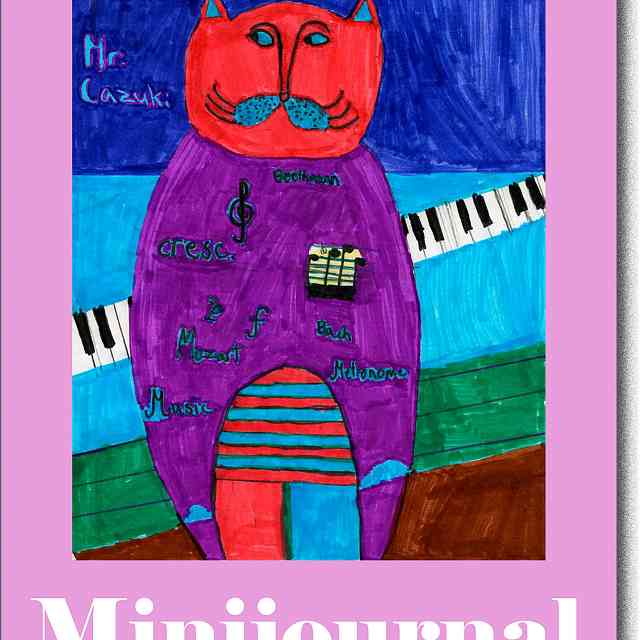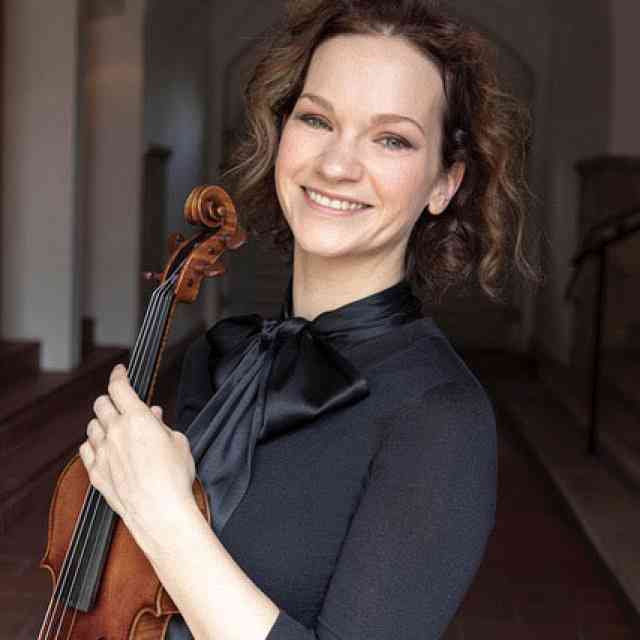This article is part one of a trio of articles about music and the brain.
The name Albert Einstein is so well known it needs no footnote. Many know Einstein was a theoretical physicist, known for his E = mc2 equation and theory of relativity. But few know he was also a gifted violinist. Was Einstein smart because he played the violin, or did he play the violin because he was smart? This is a chicken-or-the-egg type question, but an autopsy on his brain indicates the answer could well be “both.” As a Suzuki teacher-turned speech-language pathologist and certified brain injury specialist, I’d like to offer my own insights on the impact of music on the brain, particularly when it comes to language development.
Before I do, we’ll need some common vocabulary. I’ve found it can be helpful to process these terms using a metaphor. Think of the brain as one big cookie. Inside of it are the neurons, or chocolate chips: little cells responsible for registering incoming sensory information and for commanding muscle movements. The glial cells, or cookie dough holding the chocolate chips in place, nourish and protect the neurons and help nerve cells communicate with each other.
Researchers expected the autopsy of Einstein’s brain to reveal that his brain (cookie) would have more neurons (chocolate chips) than the average brain. The surprising discovery was that Einstein’s brain actually had more glia (dough).
The term “glia” comes from the Greek word for glue. Glia were often overlooked in the scientific community, with the belief being that the only purpose they served was to hold neurons together. More recent research shows that glial cells have much nobler capabilities, among which may be the origin of imagination.1 It should come as no surprise, then, that the brain of the most genius scientist of our time would have such an ample store of these cells. In a 1929 interview printed in the Saturday Evening Post, Einstein was asked to explain his thought process to journalist George Sylvester Viereck. Viereck wrote that “Einstein did not speak of careful reasoning and calculations. Instead, he said, ‘I believe in intuitions and inspirations. I am enough of the artist to draw freely upon my imagination. Imagination is more important than knowledge. Knowledge is limited. Imagination encircles the world.’”2
There is no way to know whether Einstein was born with extra glia or whether they were developed over time. What we do know is that music stimulates multiple systems in the brain, which increases connectivity for associations, and that Einstein began playing violin as a child and loved it the rest of his life. Put simply, correlation does not prove causation. But this correlation has important implications for all of us learning to play an instrument.
Professor Liam Viney, piano performance fellow at the University of Queensland School of Music in Australia, makes this statement about Einstein’s brain and music: “Music inspired and guided Einstein; it stimulated parts of his brain that could not be accessed through sitting at his desk. It gave him a sense of patterns, feelings, hunches, intuitions—all manner of sensual information that could be described as ways of thinking which don’t involve words.”4
So yes, Einstein was smart because he played the violin. Music improves the connections to the central processes of the brain, much like increasing a computer’s RAM from a gigabyte to a terabyte. According to many researchers, practicing doesn’t just help us play music better. It helps us function better in many other aspects of daily life, such as language processing.567
Einstein’s own words show he recognized that music was good for him. In the same 1929 Saturday Evening Post interview, Einstein said, “If I were not a physicist, I would probably be a musician. I often think in music. I live my daydreams in music. I see my life in terms of music.”
So yes, Einstein also played the violin because he was smart. The fulfillment it gave him became a major framework for his life. For those of us who play an instrument, the findings on Einstein’s brain have a tremendous implication. While even just listening to music can have a positive impact on the brain, the most benefits come from the actual learning that happens when we play a musical instrument. Neuroscientist Aniruddh Patel has used the acronym O.P.E.R.A to describe the five principles of neuroplasticity in theorizing how music training benefits speech.8 Neuroplasticity refers to the brain’s ability to change across an entire lifespan. All five of these principles are foundational to Suzuki pedagogy.
P: Precision
E: Experience
R: Repetition
A: Attention
Repetition: The musical activities that engage these networks are frequently repeated, strengthening neural pathways. This is why we combine levels in our group classes, so our students continue to review at all levels. Nobody is above Go Tell Aunt Rhody in Book 1, not even if she is already working on La Folia in Book 6. The same holds true for language. No parent would say to her child: “You have now learned the word ‘crucial.’ You don’t ever have to use it again.” Instead, she would provide opportunities to use that word, and she would encourage her child to continue applying that word in varied contexts.
Attention: Musical activities that engage attention networks are integral to Suzuki lessons and group classes. Nobody can learn what she isn’t paying attention to. Music helps get and hold attention, priming the brain for learning. The Sohlberg & Mateer Attention Model 9 describes levels of attention from least to most: first is being conscious, second is focused attention, third is sustained attention, fourth is selective attention, fifth is alternating attention, and sixth is divided attention. Learning to play a musical instrument in general, and Suzuki pedagogy in particular, provides rich opportunities for our children to hone all of these levels of attention.
Our focus fluctuates throughout the day and even throughout a task. Internal and external distractions vie for our attention such as hunger, fatigue, embarrassment, nervous anticipation, excitement, or feeling sick. Helping our students develop metacognition—thinking about thinking—is an important component of teaching, whether as a Suzuki teacher, parent, or a speech-language pathologist. We want them to become aware of where they are at any given moment on their attention thermometer so they can try to modulate for better success.
Learning to play the violin facilitates neural connections throughout the brain for greater access to associations, which in turn supports memory and attention: the bookends to all learning. Music and language employ dual hemisphere skills, so we can surmise how one might subserve the other for a speech-language pathologist or parent. In the next part of this trio of articles, I will show which specific processes in speech-language skills overlap with music processing skills in each hemisphere of the brain, the differences between a music therapist and a speech-language pathologist who uses music as a treatment tool, and how even just listening to music impacts the brain’s limbic system: the gateway to our emotions. Part three will tie it all together with Chaney’s Story, how a precious little girl with a rare syndrome and her remarkable family are using learning to play the violin as a treatment modality in her journey with speech-language therapy.
Until then, the next time your child or your student plays her violin, consider the myriad things she is trying to coordinate as she balances along the highwire of skill acquisition. Watch and listen and try to imagine, if you can, the wonder of what is taking place between her ears. Ponder the spectacular chocolate chip cookie that was Albert Einstein’s brain and the very believable assumption that playing the violin contributed to its size and flavor. Albert Einstein was not a professional violinist, but it’s safe to say he is not a bad example to follow.
1 Koob A. (2009). The root of thought: Unlocking glia – the brain cell that will help us sharpen our wits, heal injury, and treat brain disease. Pearson Education, Inc., publishing as FT Press.
2 George Sylvester Viereck (1929). What Life Means to Einstein. Interview with Albert Einstein, printed in the Saturday Evening Post October 26, 1929.
3 Ani Patel (2010). Music, Language, and the Brain. Oxford University Press, 1st Edition.
4 Liam Viney, “Good Vibrations: the Role of Music in Einstein’s Thinking,” The Conversation, September 3, 2020, https://theconversation.com/good-vibrations-the-role-of-music-in-einsteins-thinking-54725.
5 Dr. Michael Thaut: Currently at the Rehabilitation Sciences Institute of the University of Toronto. He is the “father” of Neurologic Music Therapy (NMT). Dr. Thaut was a professional violinist in Germany before becoming a neuroscientist. He still plays the violin.
6 Dr. Gottfried Schlaug: Currently at the Neuroimaging Laboratory at Beth Israel Deaconess & Harvard Medical School. His research includes determining the predictors and facilitators of post-stroke language and motor recovery. His instrument was the organ.
7 Dr. Daniel Levitin: Currently at McGill University in Montreal. His research focus is pattern processing in the brain. His instrument was the electric guitar.
8 Patel A. (2011). Why would musical training benefit the neural encoding of speech? The OPERA Hypothesis. Frontiers in Psychology; 2 (142), 1-14.
9 Sohlberg M, Mateer C. (1989). Introduction to cognitive rehabilitation: Theory and practice. Guilford Press.









